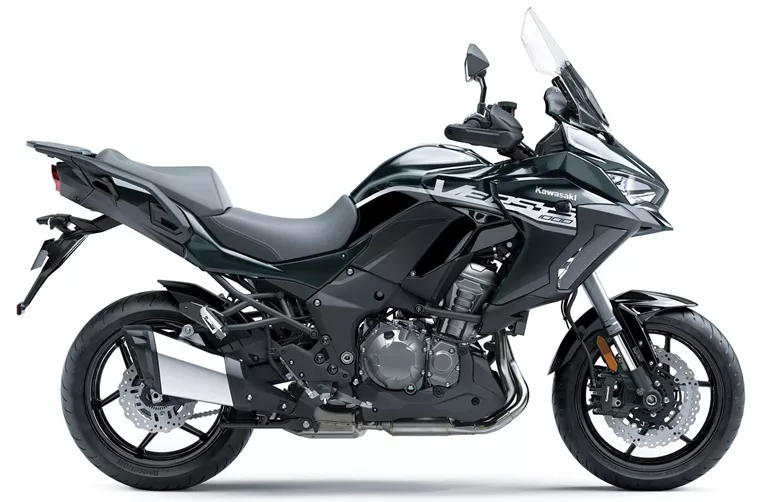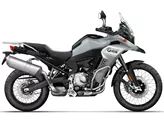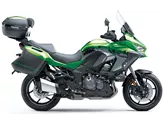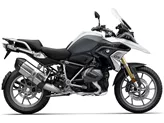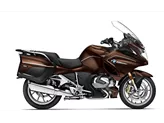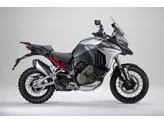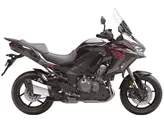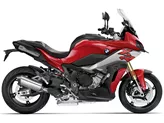BMW R 1200 GS 2017 vs. Kawasaki Versys 1000 SE 2020

BMW R 1200 GS 2017
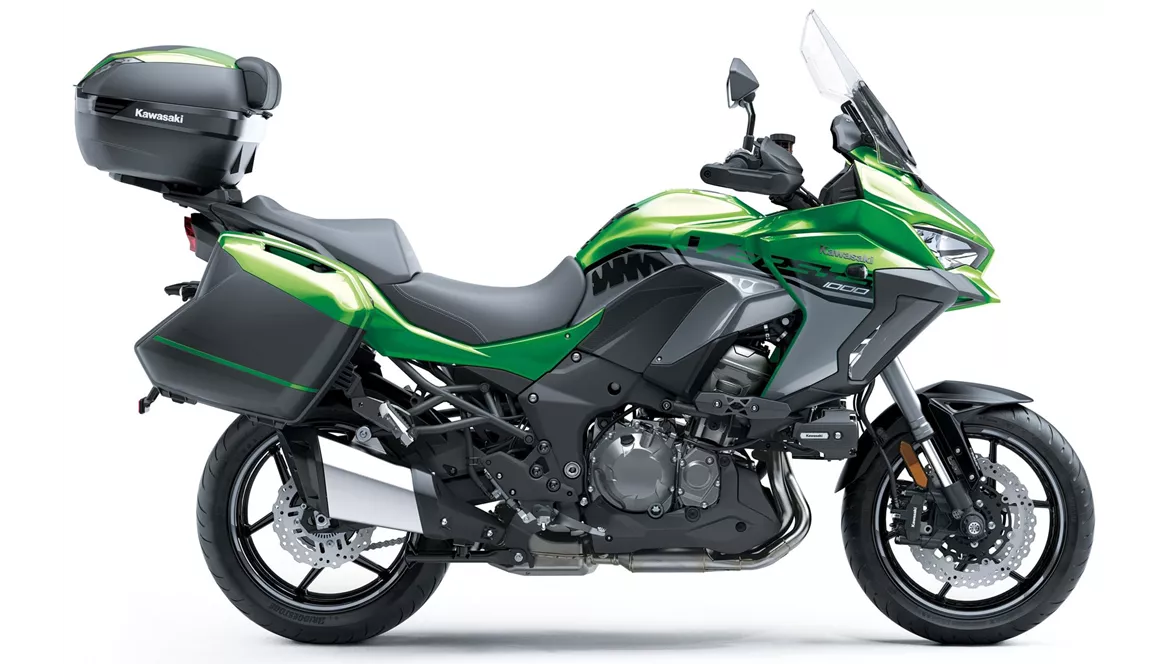
Kawasaki Versys 1000 SE 2020
Overview - BMW R 1200 GS 2017 vs Kawasaki Versys 1000 SE 2020
The BMW R 1200 GS 2017 and the Kawasaki Versys 1000 SE 2020 are both popular enduro motorcycles with their own unique features and strengths.
Starting with the BMW R 1200 GS 2017, it is equipped with a Boxer engine, which provides a mature and reliable powertrain. The engine has a bore of 101 mm and a stroke of 73 mm, resulting in a power output of 125 HP and a torque of 125 Nm. The transmission is a prop shaft, which provides smooth and efficient power delivery. The bike has a displacement of 1170 ccm and features a two-cylinder configuration.
In terms of suspension, the BMW R 1200 GS 2017 has a front suspension with a strut design and preload adjustment. The rear suspension is a single swing arm with preload adjustment as well. The frame of the bike is made of steel, providing a sturdy and robust structure. The front brakes are double disk type, ensuring powerful and reliable braking performance.

BMW R 1200 GS 2017
In terms of dimensions and weights, the BMW R 1200 GS 2017 has a front tire diameter of 19 inches and a rear tire width of 170 mm with a diameter of 17 inches. The wheelbase is 1507 mm and the seat height is 850 mm. The kerb weight of the bike, including ABS, is 238 kg. The fuel tank has a capacity of 20 liters.
Moving on to the Kawasaki Versys 1000 SE 2020, it is equipped with an in-line engine, which provides a different riding experience compared to the Boxer engine of the BMW. The engine has a bore of 77 mm and a stroke of 56 mm, resulting in a power output of 120 HP and a torque of 102 Nm. The transmission is a chain, providing a direct and responsive power delivery. The bike has a displacement of 1043 ccm and features a four-cylinder configuration.
In terms of suspension, the Kawasaki Versys 1000 SE 2020 has a front suspension with an upside-down telescopic fork design and adjustable compression, preload, and rebound settings. The rear suspension is a swing arm with adjustable compression, preload, and rebound settings as well. The frame of the bike is made of aluminum, providing a lightweight and agile structure. The front brakes are double disk type, ensuring strong and precise braking performance.
In terms of dimensions and weights, the Kawasaki Versys 1000 SE 2020 has a front tire diameter of 17 inches and a rear tire width of 180 mm with a diameter of 17 inches. The wheelbase is 1520 mm and the seat height is 840 mm. The kerb weight of the bike, including ABS, is 257 kg. The fuel tank has a capacity of 21 liters.
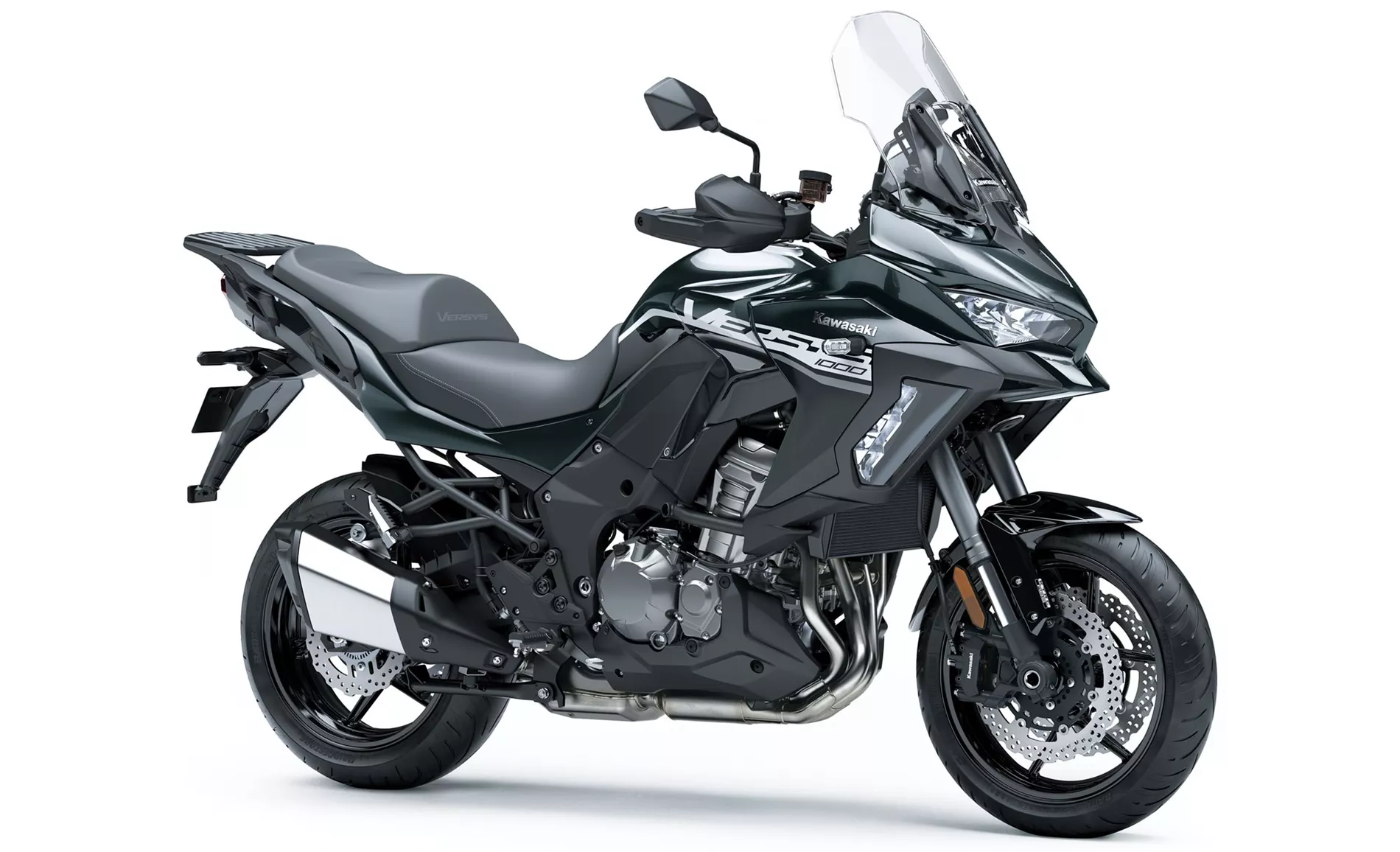
Kawasaki Versys 1000 SE 2020
In terms of strengths, the BMW R 1200 GS 2017 is praised for its mature concept, strong engine, easy handling, powerful brakes, adjustable modes and traction control, extensive equipment range, good image, and value retention. On the other hand, the Kawasaki Versys 1000 SE 2020 is praised for its high riding comfort for both the rider and passenger, great wind and weather protection, high-quality chassis that can be adjusted precisely, a well-controllable and rev-happy engine, and strong pull from the engine.
However, there are also some weaknesses associated with each bike. The BMW R 1200 GS 2017 has the drawback of many features being available at an extra cost, and its Boxer engine may be exposed in really tough terrain. On the other hand, the Kawasaki Versys 1000 SE 2020 has the weakness of the standard windshield being too generously dimensioned at high temperatures, resulting in limited wind flow, and its display and mobile phone app may not be as advanced as those of its competitors.
In conclusion, both the BMW R 1200 GS 2017 and the Kawasaki Versys 1000 SE 2020 offer their own set of strengths and weaknesses. It ultimately comes down to personal preference and specific riding needs when choosing between these two enduro motorcycles.
Technical Specifications BMW R 1200 GS 2017 compared to Kawasaki Versys 1000 SE 2020
Pros and Cons in comparison
Pros and Cons in comparison
BMW R 1200 GS 2017

For over 35 years, BMW has continued to expand the boxer range and is consistently working on the evolution of the GS. In addition to the EURO4 update of the engine with new catalytic converter and mapping, there are now even more features such as the Dynamic ESA Next Generation with automatic riding position compensation, which further improves stability and comfort for the rider. With its subtle colour scheme, the Exclusive version is intended for friends of a neat and subdued appearance and, unlike the flashier Rallye variant, is designed more for the road. Many features are at extra cost, but GS customers usually don't care - 90 percent are ordered with full equipment.
Kawasaki Versys 1000 SE 2020
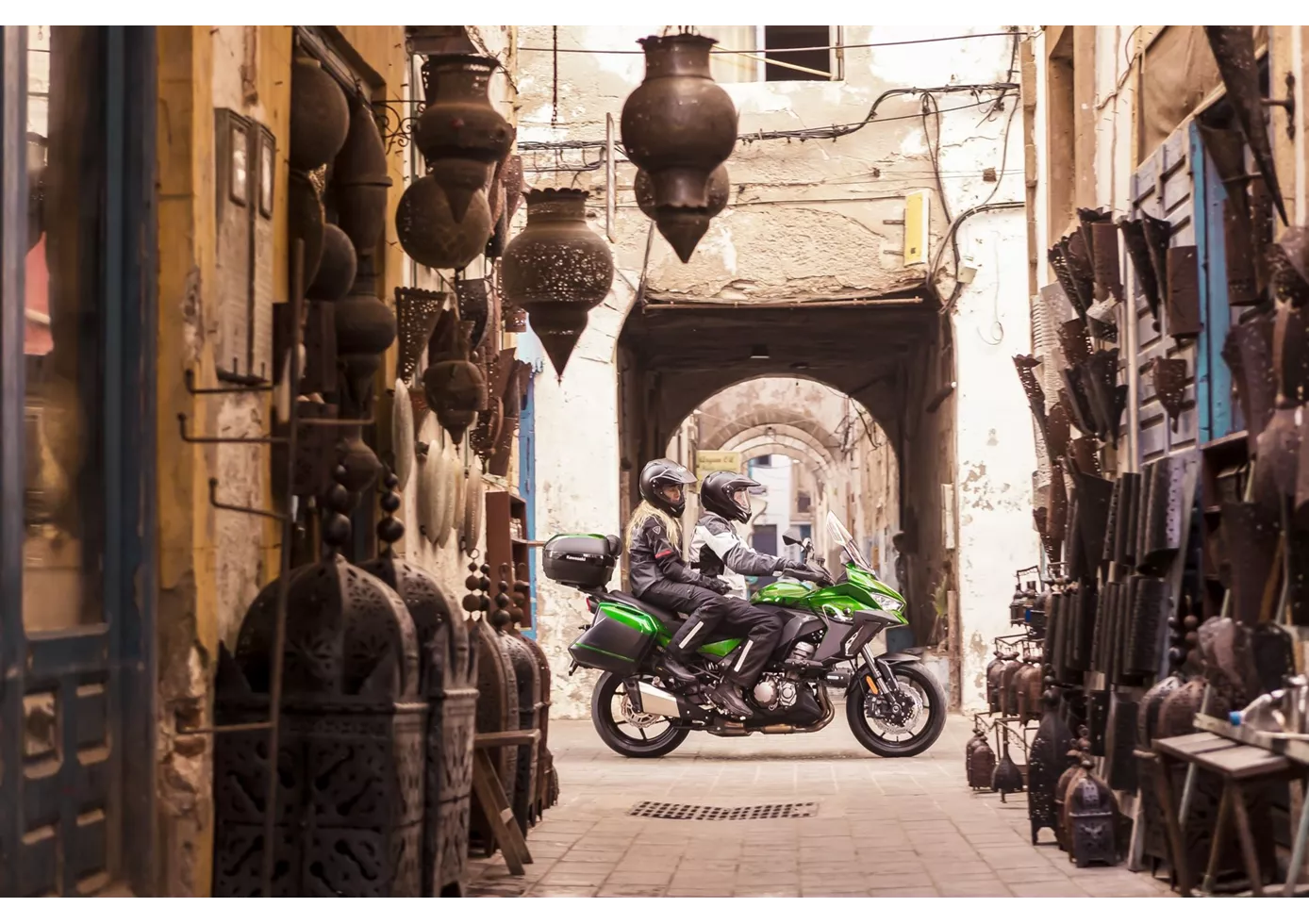
The Kawasaki Versys 1000 SE is a particularly well-designed representative of a type that is so difficult to categorise. In the end, it is simply a very good and universal motorbike. At the regulars' table, it will hardly score points with 120 hp. But in practice, all elements of the motorbike are designed and dimensioned in such a way that you enjoy riding it for a long time. On long tours, it has sufficient power, offers dynamic handling and high riding comfort. Compared to the competition, you hardly miss the power. Kawasaki should improve on the integration of a Navigatinos app in the display.
Price Comparison Avarage Market Price BMW R 1200 GS vs Kawasaki Versys 1000 SE
There are a few key differences between a BMW R 1200 GS 2017 and a Kawasaki Versys 1000 SE 2020. In terms of price, the actual average price of a BMW R 1200 GS 2017 is about 3% higher. Compared to Kawasaki Versys 1000 SE 2020 there are more BMW R 1200 GS 2017 bikes available on the 1000PS.de Marketplace, specifically 84 compared to 8. It takes less time to sell a BMW R 1200 GS with 72 days compared to 156 days for a Kawasaki Versys 1000 SE. Since model year 2005 1000PS.de editors have written 98 reviews for the BMW R 1200 GS and 12 reviews for the Kawasaki Versys 1000 SE since model year 2019. The first review for the BMW R 1200 GS was published on 20/01/2004 and now has more than 19,100 views. This compares to more than 25,500 views for the first review on Kawasaki Versys 1000 SE published on 06/11/2018.

